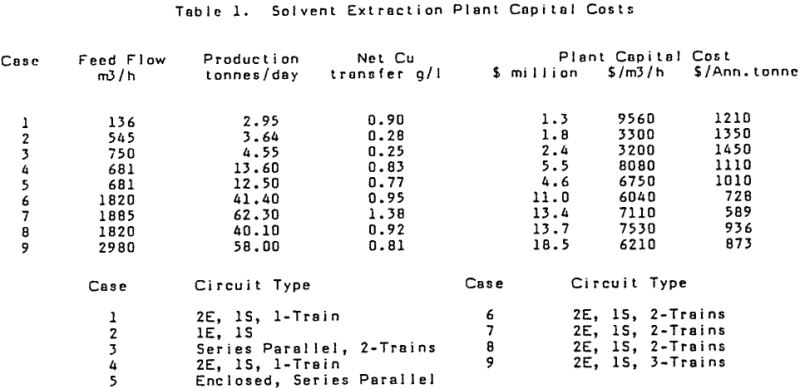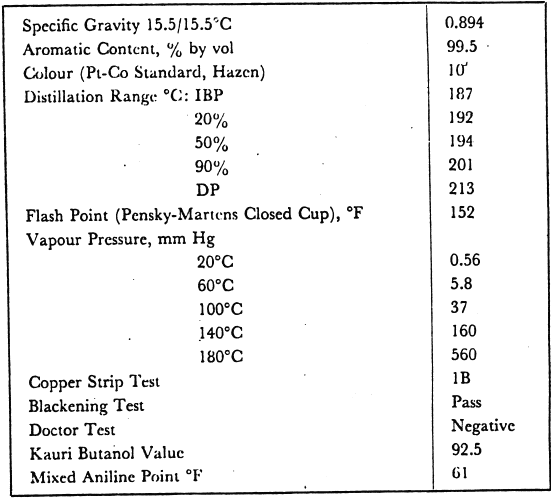SX EW Capital & Operating Cost of Solvent Extraction & Electrowinning

Solution mining followed by solvent extraction-electrowinning (SX-EW) is one possible way to economically extract copper from ore bodies which cannot otherwise be profitably exploited. Published costs for the unit processes of SX and EW are out of date especially in view of the newer reagents now available and the newer circuit configurations. This paper updates […]
Sulfuric Acid Resistant Alloys
“At-a-glance” corrosion chart for sulfuric acid is based on an extensive survey of construction materials; gives rough indication of suitable alloys. A variety of methods have been proposed many are used for the presentation of corrosion data in concise form. The authors are basically opposed to the presentation of information in simplified chart form if […]
Control Corrosion in Copper Recovery Operations: SX-EW Plants

Stainless Steel Offers Many Advantages for containing strongly acidic leaching reactions in copper recovery operations. Hydrometallurgical techniques for copper extraction have been known probably since 1752, but the dissolution of copper by leaching and the recovery from solution by precipitation or electrowinning did not become significant in the US until the mid-1960s. Today, hydrometallurgy accounts […]
Shellsol AB

Shellsol AB is a high boiling, high aromatic solvent derived from petroleum. It has good colour, low odour, a narrow distillation range and high flash point. It is complementary to Shellsol A, being very similar in many characteristics, but is higher boiling. The aromatic content is 99% by volume, the major constituents being in the […]
LIX 64N
LIX 64N Reagent is a water insoluble mixture of substituted oximes, which form water insoluble complexes with metallic cations, principally copper. Chemical Reactions LIX 64N Reagent is a hydrogen ion donor, and its chemical reactions when used as a copper extractant may be compared to an ion exchange resin system operating on a hydrogen ion […]
SX Solvent Extraction Equipment – Process Function

Mixer Settler The Mixer-Settlers are of the pump-mixer type in which the Mixer Impellers, in addition to mixing the process liquors, also provide the pumping head necessary to transfer them between stages. The variable speed Impellers can be used either with, or without, spoiler blades, the design of which is such that when fitted the […]
Solvent Extraction Equipment & Design Parameter

Parameters Provided by DPG Research & Development Division Once the process route and correct Solvent Extraction Equipment type have been decided, the following are the basic design parameters that R & D can provide: Reagent and Diluent choice and composition. The composition of the organic phase and of the aqueous input streams enable the isotherm […]
SX Solvent Extraction of Metals: A Design Manual

Definition of Solvent Extraction: The unit operation “solvent extraction” is applied in many industries, and has several different forms. For instance, for the recovery of many vegetable oils from naturally occurring products, a process is adopted in which the raw material is washed in several counter-current stages by a solvent which removes the required oil, an […]
Design of Mixer Settlers in Solvent Extraction

The development of solvent extraction processes over recent years has led to their application on an increasing scale in metal extraction plants. The author’s company has recently been awarded a contract for the design of the world’s largest solvent extraction plant based on pump-mix mixer-settlers. The plant is designed to extract copper from a leach […]
Copper Recovery by Solvent Extraction Techniques
Development of Suitable Reagents was Vital Key: Solvent extraction techniques were first applied to the recovery of metals for atomic energy projects in the decade 1945-55. They were subsequently applied to the large scale production of such refractory metals as hafnium and zirconium. Since then the technique has been applied to the recovery of the rarer […]
